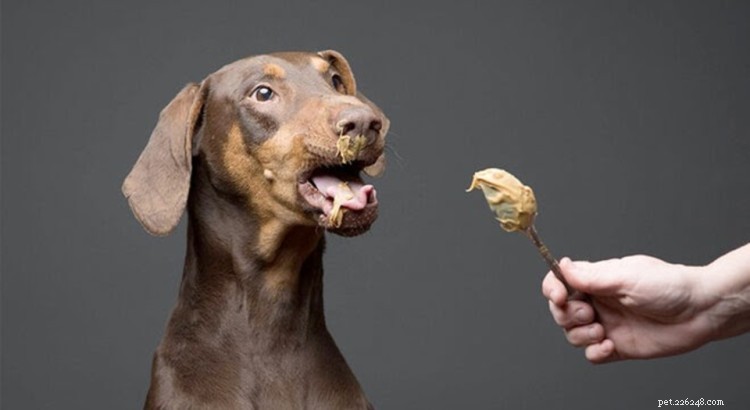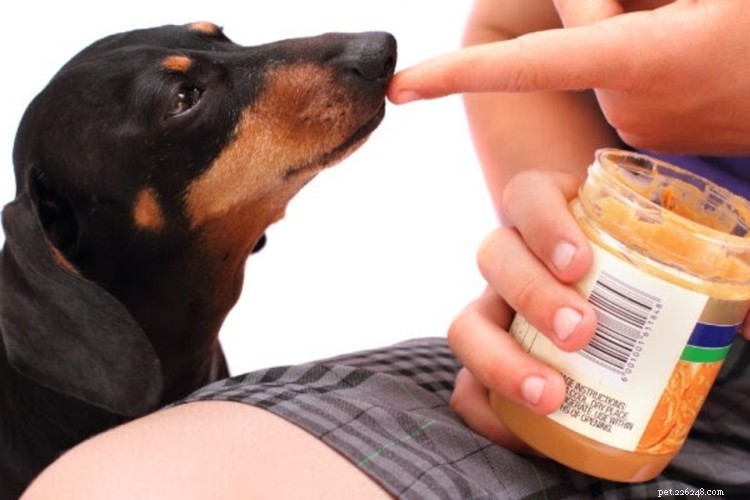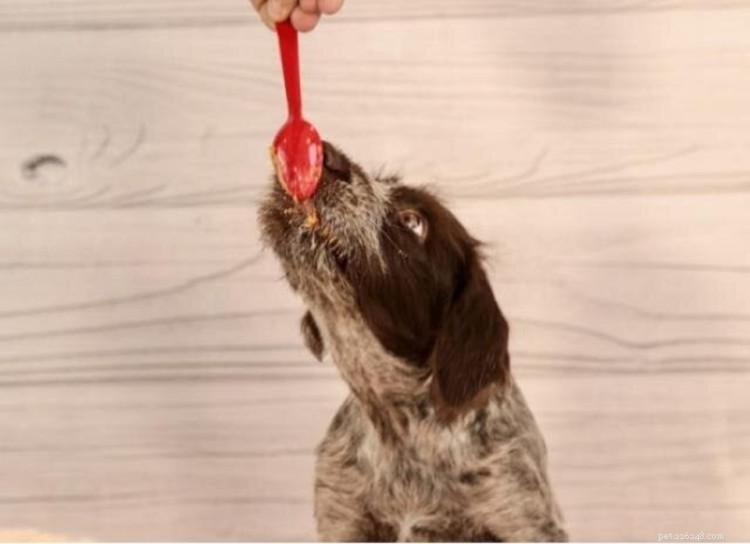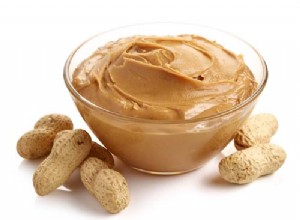
Нет никаких сомнений в том, что щенки любят арахисовое масло, но действительно ли оно полезно для них? Несмотря на то, что арахисовое масло входит в состав многих коммерческих лакомств для собак, ответ может вас удивить.
Хотя существует множество марок арахисового масла, которые безвредны для вашего питомца, некоторые виды содержат ингредиенты, которые могут быть вредны для собак. Итак, прежде чем вы позволите своему питомцу побаловать себя арахисовым маслом, вам нужно знать несколько фактов.
Профессиональный совет :Ваш пёс успел опустошить банку из-под арахисового масла, пока вы не смотрели? Ветеринарные счета могут быть дорогими, но наличие полиса страхования собак покроет последствия употребления вашим питомцем потенциально токсичных ингредиентов и даст вам душевное спокойствие.
 Источник изображения:Pin Paws
Источник изображения:Pin Paws
Арахисовое масло богато белком, натуральными жирами, витаминами Е, В и ниацином. Однако большие количества могут привести к ожирению, а также к другим проблемам со здоровьем, таким как панкреатит.
Количество арахисового масла будет зависеть от конкретной собаки, а также от марки арахисового масла (не забудьте проверить количество калорий на этикетке). Как правило, более крупные собаки должны получать одну столовую ложку, а более мелкие — не более половины столовой ложки в день.
Позвоните своему ветеринару, чтобы обсудить, безопасно ли арахисовое масло для вашего питомца и сколько вам следует давать. Это особенно важно для щенков с сопутствующими заболеваниями, такими как диабет, непереносимость пищи или хронический панкреатит.
Еще одна вещь, которую следует учитывать, — это количество арахисового масла, которое вы подаете. Помните правило 90/10:10 % рациона вашего щенка должны состоять из лакомств, а остальные 90 % должны составлять его обычный корм для собак. Кроме того, было бы неплохо чередовать арахисовое масло и более здоровые лакомства, такие как безопасные для собак фрукты и овощи.
Для щенков с хроническим панкреатитом или тем, кто подвержен риску развития панкреатита, например йоркширским терьерам и цвергшнауцерам, — даже небольшого количества лакомства с высоким содержанием жира, такого как арахисовое масло, может быть достаточно, чтобы вызвать или ухудшить их состояние, поэтому его следует полностью избегать.
Если у вашего пушистого друга чувствительность или аллергия на некоторые продукты или ему прописали специальную диету, лучше всего обезопасить себя и кормить его тем, что он обычно ест.
Щенки с проблемами почек не следует есть арахисовое масло, так как оно может содержать много соли, что может ухудшить их состояние
В двух столовых ложках арахисового масла содержится около 180–200 калорий, большая часть которых приходится на жир. Это делает его менее чем идеальным для животных с избыточным весом. . Если вы ищете лакомства для тренировок, выбирайте более постные альтернативы, такие как тунец, курица и ветчина.
Если вы хотите выбрать лучший вариант арахисового масла, вам следует проверить этикетку на наличие консервантов и дополнительного сахара. Некоторые бренды также содержат добавленную соль, что повышает содержание натрия, а также некоторые жиры, такие как пальмовое масло. Лучше всего найти марку арахисового масла без добавок или приготовить собственную домашнюю версию только с одним ингредиентом — арахисом.
При чтении этикетки будьте осторожны с такими терминами, как «100% натуральный» или «без искусственных подсластителей». Технически ксилит является «полностью натуральным» подсластителем, но может быть чрезвычайно токсичным для вашего пушистого компаньона!
Ксилит — это заменитель сахара, содержащийся в продуктах без сахара, таких как зубная паста, выпечка, добавки, мороженое и жевательные резинки. Этот искусственный подсластитель совершенно безопасен для человека, но может быть очень токсичным для собак.
Даже очень небольшое количество может вызвать быстрое высвобождение инсулина, что, в свою очередь, приводит к быстрому снижению уровня сахара в крови. Это состояние (гипогликемия) может возникнуть уже через час после употребления ксилита и, если его не лечить, может привести к летальному исходу.
Если ваш пушистый друг съест продукт, содержащий ксилит, у него могут проявиться следующие симптомы:
If you notice any of these symptoms, make sure to seek medical treatment right away. On your way to the vet, you can try to raise their blood sugar by rubbing maple or corn syrup on their gums, but this is only a temporary solution.
 Image source:Dogster
Image source:Dogster
Besides xylitol, peanut butter can contain other ingredients that can pose a threat to your dog’s health.
Most peanut butter contains aflatoxins, one of the most carcinogenic substances on the planet. Research has shown that aflatoxin can cause liver cancer in laboratory animals and is a risk for your pet as well. What’s worse, this toxic ingredient is even more common in the organic alternatives, as they’re not sprayed with glyphosate or other chemicals that kill it.
On the other hand, glyphosate, which is a common herbicide used by many major brands, can also cause health issues in dogs. According to NPIC, glyphosate symptoms in dogs include vomiting, diarrhea, lethargy, weight loss, and excessive drooling. Tests have also shown that 15% of dogs who eat grass treated with glyphosate herbicides develop serious symptoms of toxic reaction.
Lectins are proteins that can cause gut inflammation, irritating the cells lining the digestive tract and causing them to open up. This condition is called a leaky gut. When leaky gut is present, lectins escape into the bloodstream, where they trigger an inflammatory response. If inflammation persists, it might lead to chronic organ disease like arthritis, heart disease, kidney disease, allergies, and cancer.
Lectins also bind to sugars and carbohydrates in the body and interrupt messaging between inflammatory reactions and cells. In addition, they are anti-nutrients, i.e. they interfere with the proper absorption of important proteins, vitamins, and minerals.
You’ve probably heard that peanuts are rich in good omega-3 and omega-6 fats. The problem is, the ratio of these fats in peanut butter is highly unbalanced:a cup of peanuts contains 35.578 mg of omega-6 and only about 195 mg of omega-3s. That’s about 5000 times more omega-6 than omega-3!
When it comes to good fats, they’re only good if consumed in the correct ratio. Too much omega-6 can raise blood pressure, lead to blood clots, and cause the body to retain water. Omega-6 fatty acids are already represented in most of the foods your furry pal is exposed to, so feeding them peanut butter can only make things worse.
Trans-fatty acids are the result of hydrogenation, a process that makes foods more stable and more durable. They have been linked to chronic inflammation that can cause a number of diseases like heart disease and diabetes.
That’s why you need to check the label before buying peanut butter for your pooch. If you spot the words ‘hydrogenated’ or ‘partially hydrogenated oils’ in the ingredient list, stay away from it.
White sugar is responsible for feeding nasty things like bacteria, yeast, parasites, and even cancer cells. This means that the more sugar we (and our furry friends) consume, the more these grow and spread. Sugar can also lead to diabetes, premature aging, low-level inflammation, and food allergies.
While sudden, severe allergic reactions typical in people suffering from nut allergies are rare in dogs, other allergic symptoms might occur. To stay on the safe side, if you are feeding peanut butter for the first time, start with a very small amount and monitor your pet.
If you notice these symptoms after feeding peanut butter to your four-legged friend, stop immediately and get in touch with your veterinarian, who will be able to help figure out whether your pet is allergic to peanuts or something else. Also, make sure to speak to your vet before introducing any new foods to your dog’s diet.
Compare pet insurance policies to help you manage vet bills that might occur from treating an allergic reaction in your canine companion.
Enjoying your PB&J sandwich and wondering whether you should share it with your pooch?
While peanut butter can be safe for your four-legged friend if given in moderate amounts, jelly is an absolute no-no. This is because jelly, jam, and preserves contain lots of sugar. So, if you are already treating your dog with peanut butter, adding more sugar will increase the risk of diabetes and obesity even more.
Some jelly brands also contain xylitol and some types are made from fruits that aren’t dog-safe, like grapes. Grapes (as well as currants and raisins) can be toxic to dogs and cause acute kidney failure.  Image source:PetMD
Image source:PetMD
Here are a few fun ways to feed peanut butter to your four-legged pal:
Use it to give medication . Giving medication is often stressful as most pups won’t eat it plain. Use peanut butter’s deliciousness to conceal the flavor and texture of pills.
Make bathtime less stressful . Smear some peanut butter on the wall of your shower or tub to distract your pup during bath time (or while clipping their nails). They’ll be busy licking it and less focused on being shampooed, making the whole experience a lot easier for both of you.
Sweeten the entertainment . Fill a treat toy with some peanut butter and let your high-energy furry companion lick during chill out time.
Use it for training . Give some peanut butter to your pooch after they have shown good behavior or done what they were asked to do. This will make them more likely to do good again next time as they’ll remember getting an extra tasty treat.
The bottom line is, your canine companion can eat peanut butter as long as it’s fed in moderation and doesn’t contain xylitol . Don’t forget to alternate peanut butter with other healthy treats and you’ll make sure that your pup is satisfied.
If you have any questions or concerns about your pet’s diet, get in touch with your vet for recommendations and advice.

Короткий ответ:да. Арахис, в отличие от других орехов, не токсичен для собак. Как и в случае с любым новым кормом, всегда разумно вводить его вашей собаке постепенно, чтобы вы могли легко определить, есть ли у вашей собаки аллергия или какие-либо проблемы с его перевариванием. Какой арахис безопасе

Кто не любит арахисовое масло? Это популярное здоровое лакомство среди людей, но могут ли собаки есть арахисовое масло так же, как и мы, и безопасно ли употреблять арахисовое масло для собак? Каковы преимущества кормления собак арахисовым маслом и есть ли побочные эффекты? Давайте посмотрим поближе